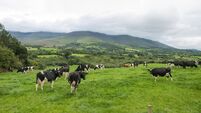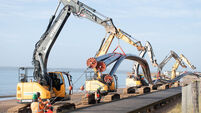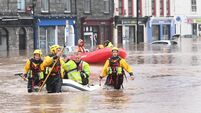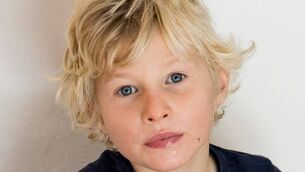New UCC research finds drones can battle pollution and combat illegal fishing

Clew Bay, Co Mayo captured from a drone. Such images are being used to assess seaweed stocks in the area, supporting aquaculture and carbon stock assessments. Picture: Samuel Hayes
New research has found drones could play an important role in supporting the development of sustainable practices along the Irish coast and help to aid the monitoring of pollution, erosion, and new viruses.
Battling pollution, combating illegal fishing, and monitoring heritage sites at risk of erosion are just some of the ways drones can be used to protect our coastlines, a new study from University College Cork (UCC) researchers has found.














